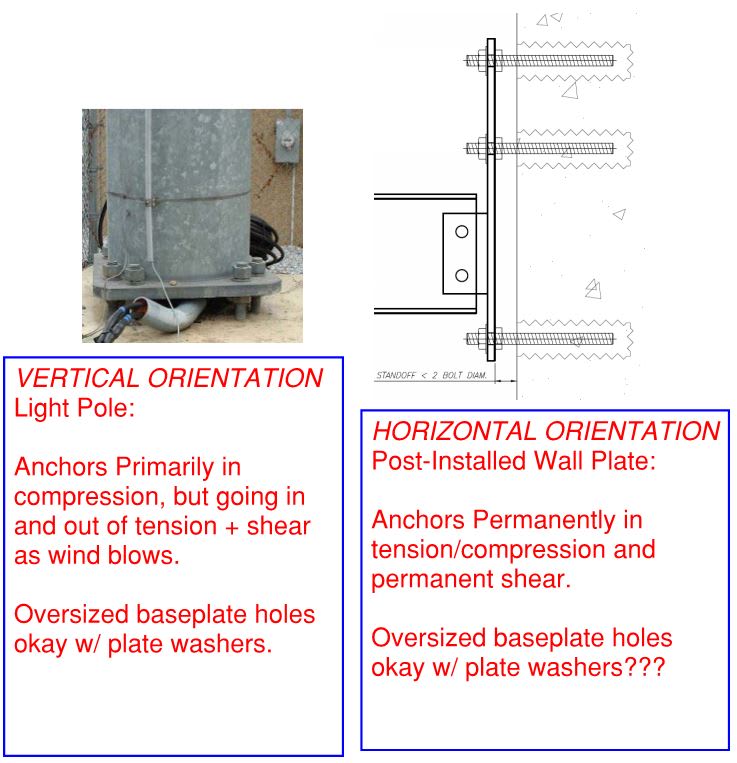JoelTXCive
Civil/Environmental
My office does a lot of work where we go into existing WWTP or storm water pump stations and remodel them; or we build new items within an existing plant.
We often come across the issue of attaching new pipe supports, ladders, or work platforms to an existing concrete wall. While structurally sound, the concrete walls we are attaching to are often far from a perfect surface. It might be a bowed wall, out of level, out of plumb, etc. etc.
This always makes attaching things and designing wall anchorages a challenge.
Does anyone know a good design resource for post installed concrete anchorages for these types of miscellaneous items?
I have a several questions but the main ones are:
1) Can wall plates use levelling nuts or grouted pads to correct for imperfect surfaces?
2) Bolt holes? Standard bolt holes only, Short slot transverse to the load, or can larger baseplate holes be used with plate washers?
I have searched all over for literature on this subject but not found any. The best I have come up with is Daniel Horn’s Monopole Base design guide and the AISC Baseplate Design guide.
These are excellent resources, but the loading is different. (See attached image)
I appreciate any comments or direction towards a book or journal article.
Thank you in advance….

We often come across the issue of attaching new pipe supports, ladders, or work platforms to an existing concrete wall. While structurally sound, the concrete walls we are attaching to are often far from a perfect surface. It might be a bowed wall, out of level, out of plumb, etc. etc.
This always makes attaching things and designing wall anchorages a challenge.
Does anyone know a good design resource for post installed concrete anchorages for these types of miscellaneous items?
I have a several questions but the main ones are:
1) Can wall plates use levelling nuts or grouted pads to correct for imperfect surfaces?
2) Bolt holes? Standard bolt holes only, Short slot transverse to the load, or can larger baseplate holes be used with plate washers?
I have searched all over for literature on this subject but not found any. The best I have come up with is Daniel Horn’s Monopole Base design guide and the AISC Baseplate Design guide.
These are excellent resources, but the loading is different. (See attached image)
I appreciate any comments or direction towards a book or journal article.
Thank you in advance….

